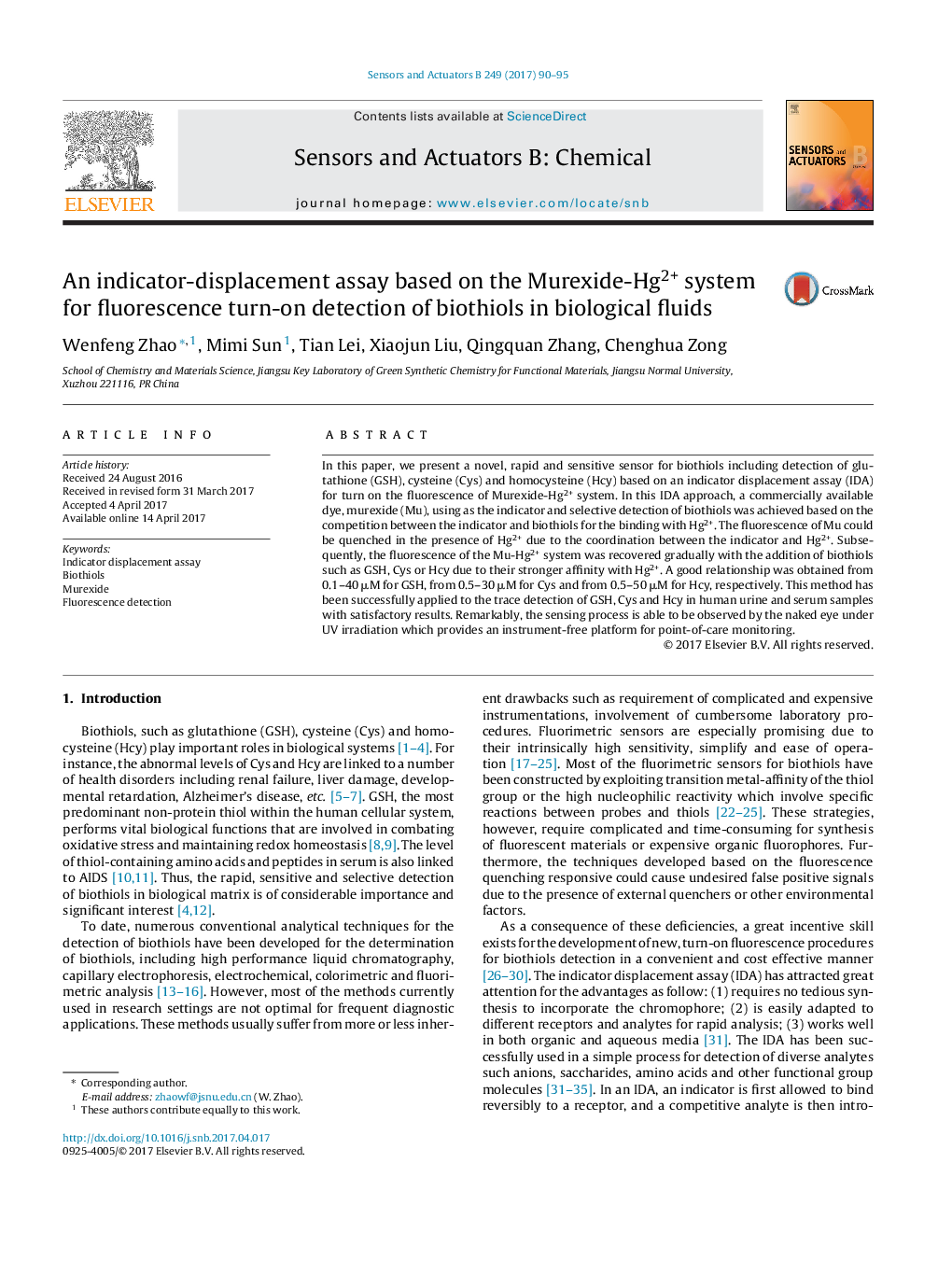| Article ID | Journal | Published Year | Pages | File Type |
|---|---|---|---|---|
| 5009261 | Sensors and Actuators B: Chemical | 2017 | 6 Pages |
â¢A simple, rapid method for biothiols detection in biological fluids based on the indicator-displacement assay (IDA) approach was developed.â¢The sensing mechanism was proposed to be a simple coordinative competition between the indicator, murixide and biothiols for binding with Hg2+.â¢This sensing system displays excellent analytical performance which is promising for clinical diagnosis.
In this paper, we present a novel, rapid and sensitive sensor for biothiols including detection of glutathione (GSH), cysteine (Cys) and homocysteine (Hcy) based on an indicator displacement assay (IDA) for turn on the fluorescence of Murexide-Hg2+ system. In this IDA approach, a commercially available dye, murexide (Mu), using as the indicator and selective detection of biothiols was achieved based on the competition between the indicator and biothiols for the binding with Hg2+. The fluorescence of Mu could be quenched in the presence of Hg2+ due to the coordination between the indicator and Hg2+. Subsequently, the fluorescence of the Mu-Hg2+ system was recovered gradually with the addition of biothiols such as GSH, Cys or Hcy due to their stronger affinity with Hg2+. A good relationship was obtained from 0.1-40 μM for GSH, from 0.5-30 μM for Cys and from 0.5-50 μM for Hcy, respectively. This method has been successfully applied to the trace detection of GSH, Cys and Hcy in human urine and serum samples with satisfactory results. Remarkably, the sensing process is able to be observed by the naked eye under UV irradiation which provides an instrument-free platform for point-of-care monitoring.
